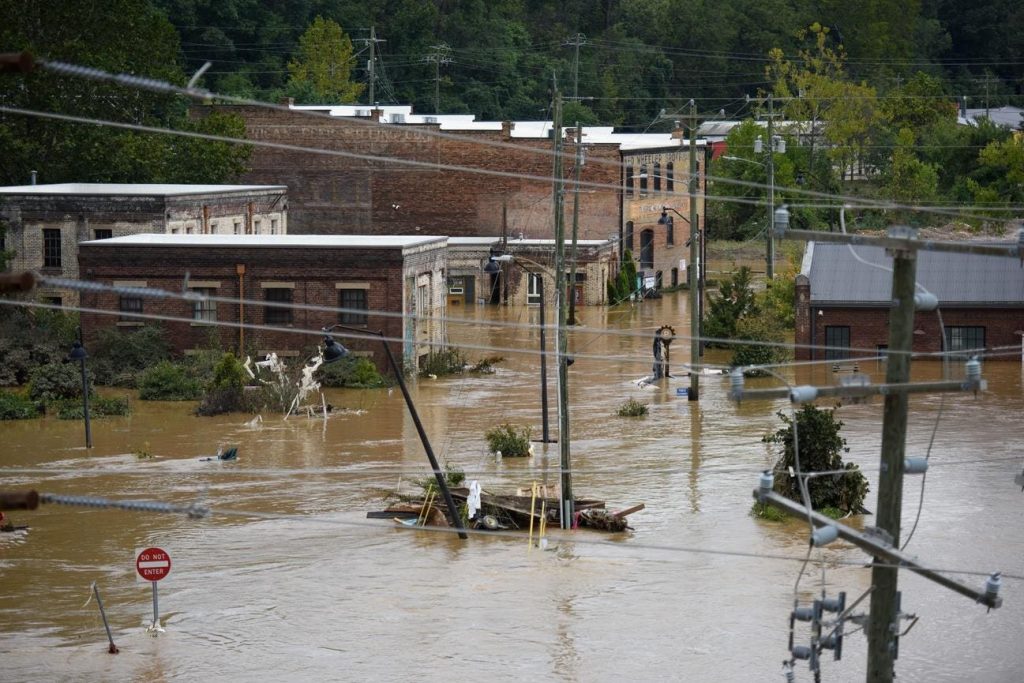While storm surges and strong winds are typically considered the most dangerous risks to life and property during a hurricane, Hurricanes Helene and Milton are strong reminders of the additional destructive, and potentially life-threatening impacts, distant from the storm’s core. Inland flooding, as we saw with Helene and Milton with at least 41 tornadoes, punctuated the danger of secondary weather events caused by these storms. With more than a month left in the official hurricane season, it serves as a reminder that hurricanes can be a threat long before landfall and far from the storm’s center.
Flooding Followed By Mudslides
Hurricane Helene stretched over 500 miles from Florida to the Southern Appalachians, leaving a path of destruction in its wake. In an interview with the Associated Press, Edward Clark, head of the National Oceanic and Atmospheric Administration’s National Water Center in Tuscaloosa, Alabama, estimated that 40 trillion gallons of rain fell from Helene. That would fill the Dallas Cowboy’s stadium 51,000 times, or equal to 619 days of constant water flow over Niagara Falls.
While that number is staggering it was the compressed time that made it especially dangerous. August, Georgia had 12 to 15 inches of rain— about four months’ worth of rain in just two days. Ashville, North Carolina saw nearly 30 inches of rain in a few days. The intense rain triggered mudslides that damaged infrastructure, homes and claimed at least 13 of the 250 people who died in Hurricane Helene.
Hurricane-Produced Tornadoes
Hurricanes can also produce a large number of tornadoes, particularly in the associated outer rainbands. Hurricane Ivan spawned 120 tornadoes across nine states, the most of any hurricane or tropical storm on record in the U.S.
Most tornadoes spawned by tropical storms and hurricanes are rated at the low end of the Enhanced Fujita Scale, a rating based on estimated wind speeds and related damage. The exceptions are Hurricanes Carla and Hilda with documented F-4 tornadoes from hurricanes moving inland.
Hurricane Milton’s 26 confirmed tornadoes put it in the range of moderate to severe tornado outbreaks for a hurricane, especially considering that many of them were particularly strong, with several reaching EF-3 strength.
These tornadoes only compound the extreme weather impacts associated with tropical systems. in the case of Hurricane Milton, at least five people died just in St. Lucie County, Florida, contributing to the total of 17 deaths reported to date. The storm-related tornadoes also contributed to more than 3 million homes and businesses in Florida being without power after the storm.
What Triggers Tornadoes When Hurricanes Hit
Tornadoes aren’t unusual in Florida — the state has more tornadoes per square mile than any other state — but they’re typically less destructive than those in the Midwest and Plains. However, tornadoes that happen during hurricanes can be as strong as those found in Tornado Alley because the outer rain bands of hurricanes often contain intense thunderstorms of their own and are often moving very fast resulting in less advance warning.
Tornadoes resulting from hurricanes and tropical storms most often occur in the right-front quadrant of the storm, but sometimes they can also occur near the storm’s eyewall. The heat and humidity present in the atmosphere during such storms and changes in wind direction or speed with height, known as wind shear, contribute to the tornado outbreak.
That was especially evident with Hurricane Milton. The combination of instability in the atmosphere, combined with the fact that Milton spent approximately 24 hours offshore with warmth from the sun, created the right environment for the tornado outbreak far from the hurricane’s center.
Another very significant threat associated with tornadoes produced by tropical systems is the fact that the tornadoes form rapidly, and are frequently “rain-wrapped”, making it hard for people to recognize the tornado’s presence until it’s too late.
Climate Change Influence on Hurricanes
Through attribution research, extreme weather events can be directly tied to climate change, such as rainfall and extreme temperatures. You can find more information about it in a previous Forbes article I wrote. Recent research has found that climate change may influence tornadoes produced by hurricanes, like those seen with Milton. The study shows that Milton’s wind speeds were likely 10% stronger because of climate change’s influence and contributed to tornadic activity.
Meteorologists, public entities such as NOAA and the National Hurricane Center, and public officials were diligent and urgent in forewarning those in the hurricanes’ path about the breadth of potential impacts and the risk to life and property. But tornadoes and inland flooding can still catch businesses and the public off guard, as the focus is often on the coastal implications of a hurricane, like strong winds and storm surges.
There are always opportunities to improve preparing for extreme events and these back-to-back hurricanes are no exception. Making communities more resilient and prepare for what economists Gernot Wagner and Martin Weitzman call “climate shock” will require all stakeholders – from weather experts to response agencies and the public – to understand and respond accordingly to the primary and secondary impacts of extreme weather events.
Read the full article here






